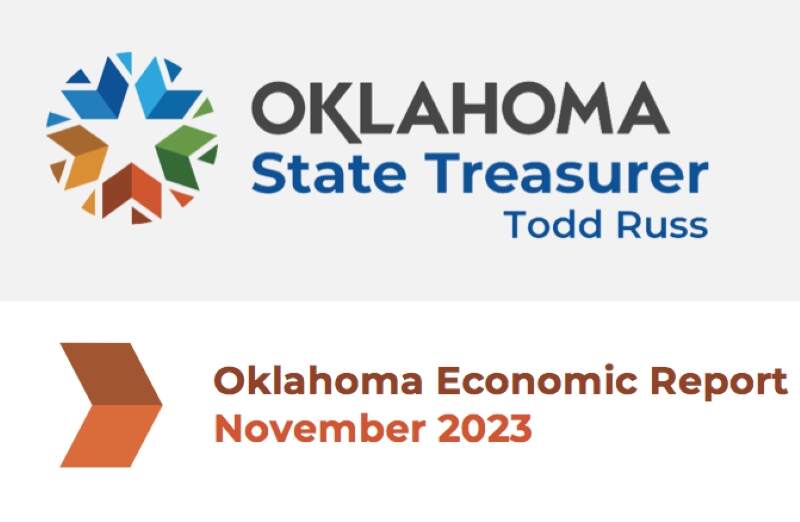Oklahoma State Treasurer Todd Russ released a document holding the Economic Report of Oklahoma for November 2023. Here is the summary:
12-Month Gross Receipts
Gross Income taxes generated $6 Billion – less than a 0.1% increase
Sales Tax and Use Tax produced $7.1 Billion – 4.1% increase
Oil and Gas Gross Production Taxes are $1.38 Billion – a 29.1% decrease
Motor Vehicle Taxes totaled $877.7 Million – 0.3% increase
Other sources made $1.64 Billion – 1.8% increase
Over the last twelve months, Gross Production Tax totaled $1.38 Billion.
November’s average WTI Crude Oil Price was down almost $8 from the prior month, settling at $77.69. Many factors correlate with commodity prices such as the number of drilling rigs, higher prices, and drilling activity.
At the end of November, the Dow Jones Industrial Average closed at $35,950.89. Dow is one of the oldest and most frequently followed indexes.
The Oklahoma component of the Index dropped in November, resting at 43.2 from 53.0 the previous month. The index ranges between 0 and 100 with 50 being the point of growth neutrality.
Oklahoma’s Unemployment Rate ended at 3.2% – an increase of 0.2%. Unemployment is used heavily to measure the health of the economy. High unemployment depicts a contracting economy.
The U.S. Bureau of Labor Statistics reports the annual inflation rate remained at 3.1%. Consumer Price Index (CPI) is a key economic measure of inflation rate.
For Gasoline per Regular Gallon, The National Average Price was $3.238 per gallon. The lowest regional rates were found in the Midwest and Southeast and the highest costs were seen on the West Coast.
Mortgage averaged a 30-year Fixed-Rate Mortgage from January 2000 through November 2023. Mortgage rates are the interest charges for home loans. Each is based on U.S. Treasury bond yields.












